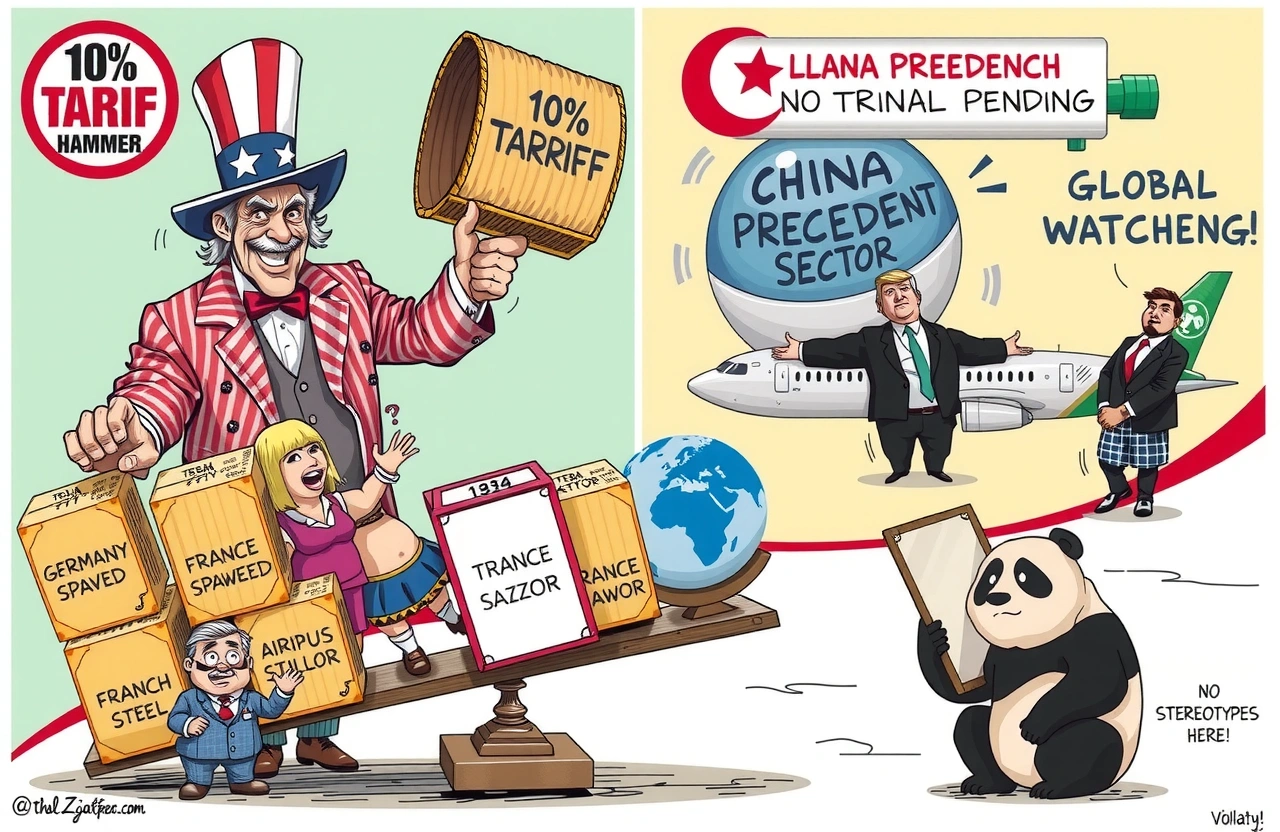Transatlantic Trade Turmoil Resurfaces
The specter of tariff warfare has returned to US-EU relations according to diplomatic sources speaking to Politico. American negotiators reportedly offered Brussels a comprehensive agreement instituting 10% duties on all European imports—with high-stakes exceptions carved out specifically for aviation and spirits sectors. This abrupt proposal arrives amidst deteriorating trade relations and precedes intense summit negotiations scheduled later this month.
Tension permeates ongoing discussions given Washington’s silence on politically sensitive requests from Brussels. EU diplomats explicitly sought exemptions for automotive, pharmaceutical, steel, and aluminum exports—sectors employing millions across European industrial heartlands. French champagne producers, Italian grappa distilleries, and whisky makers across Scotland and Ireland applauded proposed exemptions shielding their iconic exports from border levies.
Core Provisions of the Proposed Agreement
Universal Baseline Framework
The core framework proposes:
– Maintaining a 10% blanket tariff rate for most goods crossings the Atlantic
– Removing quantitative restrictions beyond the tariff mechanism
– Reviewing manufactured goods coverage biennially
Strategic Sector Exemptions
The agreement’s fine print reveals:
– Complete exclusion of commercial aircraft including Airbus models
– Elimination of tariffs on all distilled spirits across EU denominations
– Specific carve-outs for premium wine products above certain valuations
Political Sensitivities Remain Unaddressed
Many EU demands remain unanswered according to Brussels officials intimately familiar with talks:
– Automobile sector protections sought by Germany’s powerhouse industry
– Pharmaceutical exemptions for French and Danish medicine exporters
– Steel/aluminum safeguards requested by eastern European manufacturers
Trump’s Shadow Looms Over Negotiations
Multiple sources confirm this 10% tariff deal remains pending explicit approval from former President Donald Trump should he return to office:
– Requires formal endorsement to enter implementation phase
– Revised negotiating directives issued following recent US leadership consultations
– Timeline uncertainty given volatile political climate
American Tariff Strategy Parallels
Washington’s proposal echoes:
– Trump-era Section 232 steel/aluminum tariffs initially implemented 2018
– Recent semiconductor export controls targeting China
– Longstanding agricultural defense mechanisms
European Industry Reactions
Celebration Among Exempted Sectors
Countries benefiting include:
– France: Champagne houses spared tens of millions in duties
– Italy: Grappa producers avoid competitive disadvantage
– Ireland: Prestigious whiskey brands maintain US market access
Anxiety in Non-Exempt Industries
Sectors expressing concern:
– German automakers anticipating margin compression
– Swedish machinery exporters fearing order cancellations
– Polish steel producers wary of renewed competitiveness sag
Economic Calculus
The differential treatment creates winners pursuing aggressive US market penetration versus struggling industries confronting new cost barriers:
The Road Ahead
The coming weeks demand intensive technocratic negotiations managed by:
– European Commissioner Valdis Dombrovskis
– US Trade Representative Katherine Tai
Simultaneously, presidential coordination mechanisms accelerate between Washington and Brussels power centers—finalizing this complex trade architecture requires alignment across:
– Regulatory frameworks
– Tax policy implementation
– Customs modernization protocols
Geopolitical tensions simultaneously simmer regarding:
– China market access policies
– Russian sanction enforcement priorities
– Middle Eastern trade corridor security
Global Implications Beyond Europe
The proposed structure establishes precedent for other US trading partners:
– Japan/Korea likely facing analogous negotiations
– UK positioning based on outcomes
– Canada/Mexico NAFTA implications
Multilateral institutions like Geneva’s WTO Secretariat intensively monitor proceedings—knowing US-EU friction risks unraveling fragile tariff ceasefire agreements across hemispheres.
Stakes Couldn’t Be Higher
With America’s projection suggests €128 billion bilateral trade hinges on negotiations, Europeans face impossible choices:
– Accept asymmetric industrial protections?
– Risk broader transatlantic escalation?
– Deploy proportionate retaliatory measures?
The intricacy of America’s 10% tariff deal proposal—particularly its targeted exceptions—reveals calibrated strategy incorporating sectoral vulnerabilities within broader bargaining frameworks. Rather than bludgeoning Europe uniformly, Washington strategically pressures Berlin’s automotive muscle while accommodating Parisian vineyards.
European producers should immediately:
– Audit product classifications under proposed tariff codes
– Consult international trade attorneys on operational exposure
– Petition national ministries prioritizing their exemption bids
For these negotiations hold enduring consequences: potentially reshaping the global competitive landscape overnight while demonstrating America’s assertive posture towards its oldest trading partners.




